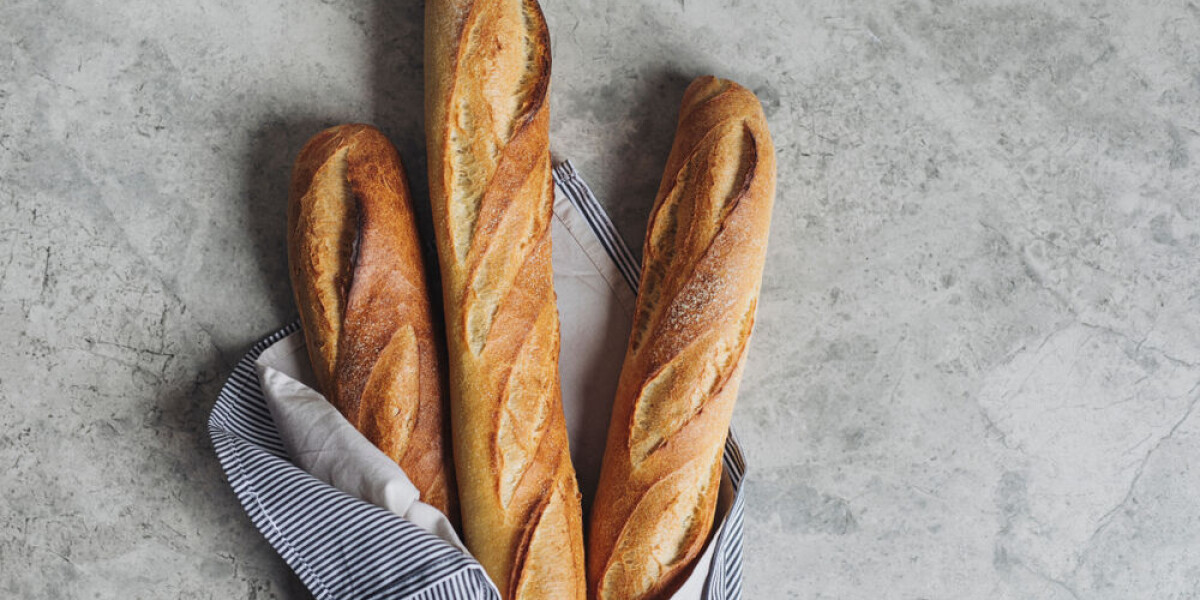
- Select a language for the TTS:
- UK English Female
- UK English Male
- US English Female
- US English Male
- Australian Female
- Australian Male
- Language selected: (auto detect) - EN
Play all audios:
Unesco has recognised the artisanal savoir-faire involved in producing French baguettes by adding the practice to its list of intangible cultural heritage. > 🔴 BREAKING > > New
inscription on the #IntangibleHeritage List: Artisanal know-how > and culture of baguette bread. > > Bravo #France 🇫🇷! > > ℹ️ https://t.co/n5nd2IfvLJ #LivingHeritage >
pic.twitter.com/MINHjuVffK > — UNESCO 🏛️ #Education #Sciences #Culture 🇺🇳 (@UNESCO) > November 30, 2022 _The Connexion_ breaks down the subtleties behind choosing a baguette and
following the customs that are second nature to French people visiting a _boulangerie_. We will look at the meaning behind terms associated with the baking techniques, different types of
baguettes and some traditional phrases that have become cliché among younger generations. READ MORE: FRENCH BAGUETTE-MAKING PRACTICES ADDED TO UNESCO INTANGIBLE HERITAGE BAKING METHODS ‘BIEN
CUITE’ ‘_Bien cuite_’ – in the feminine form as we are referring to une baguette – is the equivalent of ordering red meat well done. It means that the outside of your baguette is crusty,
with the dough having taken on a yellow-orange hue from baking. It also means that the crumb has become light as it is filled with air bubbles during the baking process. ‘MI-CUITE’ OR ‘PAS
TROP CUITE’ ‘_Mi-cuite_’ is employed by bakers to refer to a baguette that is crusty on the outside – the dough having turned more toward yellow than orange – but soft on the inside.
However, most French people ordering ‘_mi-cuite_’ baguettes ask for a bread which is ‘_pas trop cuite_’ (‘not cooked too much’) which could lead to confusion for the baker, as told to _The
Connexion _by two French bakers. Ordering a ‘_baguette pas trop cuite_’ requires the baker to present different types of baguettes to customers to work out whether ‘pas trop cuite’ means
‘_mi-cuite_’ or ‘_blanche_.’ ‘BLANCHE’ ‘Blanche’ means that the baguette is soft on the outside and the inside. A ‘_baguette blanche_’ is not to be confused with ‘pre-cooked’ baguettes sold
pre-packed in big retail stores such as E. Leclerc, Intermarché, Auchan or Carrefour. When a baguette is pre-cooked, the baker has proofed it in a proofing cabinet, but not completed the
baking process. Consumers are free to bake it in the oven or eat it (almost) raw after purchase. TYPES OF BAGUETTES Your local _boulangerie_ will offer different types of baguettes, the
variety being found in their shape or composition. The wide array of offers available has led popular comedy duo Philippe Chevallier and Régis Laspalès – known under the stage name
Chevallier et Laspalès – to write a sketch on the issue, in which one customer taking five minutes to choose between a variety of baguettes. [embedded content] ‘BAGUETTE’ The famous and
well-loved baguette some bakeries in the US and UK desperately try to imitate. This is the baguette that was recognised by Unesco and has received congratulatory messages from politicians
such as President Emmanuel Macron, Finance Minister Bruno Le Maire and Ile-de-France regional president Valérie Pécresse, to name a few. > 250 grammes de magie et de perfection dans nos
quotidiens. Un art de > vivre à la française. Nous nous battions depuis des années avec > les boulangers et le monde de la gastronomie pour sa reconnaissance. > La baguette est
désormais au patrimoine immatériel de l’Unesco ! > https://t.co/91joZkQPI2 > — Emmanuel Macron (@EmmanuelMacron) November 30, 2022 President Macron called the baguette “250 grams of
magic and perfection in our daily lives”. ‘TRADITION’ _Tradition_ was chosen by 41%* of French people as their favourite baguette, according to a poll carried out for the Fédération des
entreprises de boulangerie, France’s baker federation. The baguette is made from flour but is left to rest longer when it comes out of the oven. ‘FICELLE’ ‘_Ficelle_’ takes its name from its
‘string’ shape. It is longer, thinner and twice as light as the regular ‘baguette.’ ‘FLUTE’ ‘_Flute_’ is another type of baguette that is usually bigger than regular baguettes; its weight
can reach 400 grams in some regions. However, not all regions follow these weight rules and flutes of 250 grams or less can often be found in local boulangeries. Other less well-known
baguettes include a ‘_baguette moulée_’, ‘_sarmentine_’ or ‘_pain bâtard_.’ Some customers also call baguettes ‘_banette_’, after the name of a milling company that supplies many French
boulangeries while it does not refer to any type of baguette. ORAL CUSTOMS French people and bakers follow many small ceremonies and customs in boulangeries, which are often picked up by the
internet community in the form of memes. The conversation usually starts with the baker asking : ‘_Qu’est-ce qu’il vous faut aujourd’hui?_’ (what do you need today?) or ‘_Qu’est-ce qu’il
vous faudra aujourd’hui?_’ (the same sentence but using future tense). After you have asked for your bread, the baker will often ask the classic but timeless: ‘_Et avec ceci?_’ (Do you need
something else?), an invitation to make you question whether you have forgotten anything or really need that apple pie you have been eyeing. The baker may also ask you: ‘_Je vous mets un
petit sac?_’ (Would you like a small bag?) Then comes the payment. If you pay in cash directly to the baker – as opposed to an automatic change machine – using larger notes than the total
owed, the baker will have to give you change and will often count out loud as they do so. Your change will usually be in cash and coins, which means that you will receive it in two stages.
By the second stage, the baker might say something like: ‘_Et sept qui font 20_.’ (And seven, which gets us to 20). The example would of course change depending on the bill. Once you have
received your change and you are given your bag, pay close attention as another common sentence could follow. Either the baker or the customer can finish the exchange by saying : ‘_En vous
remerciant_’ (With thanks), using the gerund form of the verb. OUR SURVEY RESULT _The Connexion_ asked 54 French people to position themselves on how they like their baguette to be cooked,
offering three types of baking intensity from ‘_blanche__’_, to ‘_mi-cuite_’ and ‘_bien cuite_’. 36 chose ‘_mi-cuite_’, 17 chose ‘_bien cuite_’ and one chose '_blanche_'. Some
explained, however, that it depends from which type of food baguettes will be consumed. ‘Bien cuite’ was said by several to fit nicely with butter or cheese while ‘mi-cuite’ is better when
eaten on its own. _*Poll carried out by Qualiquanti in March 2021, involving 2,125 French bread eaters aged 18 and above, through a questionnaire._ RELATED ARTICLES FRENCH BAGUETTE-BAKING
CONSIDERED FOR UNESCO INTANGIBLE HERITAGE LIST RECIPES: BAKE A FRENCH BAGUETTE OR SWEET POTATO BREAD LIKE A MASTER BAGUETTE, PETITS PAINS: SEVEN FRENCH EXPRESSIONS TO DO WITH BREAD






